Learn More
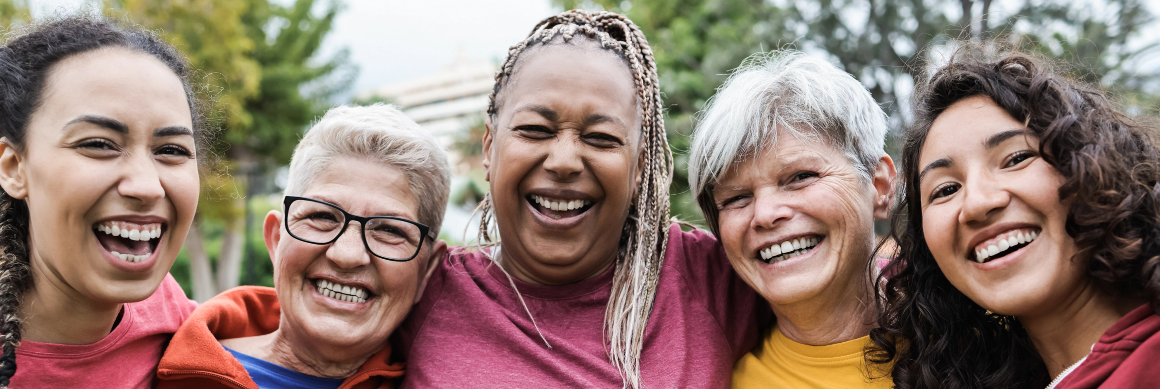
Healthy Chicago Mission
To close the life expectancy gap—and to ensure healthier, longer lives for all Chicagoans—we come together to secure power and resources where they're most needed in our communities.
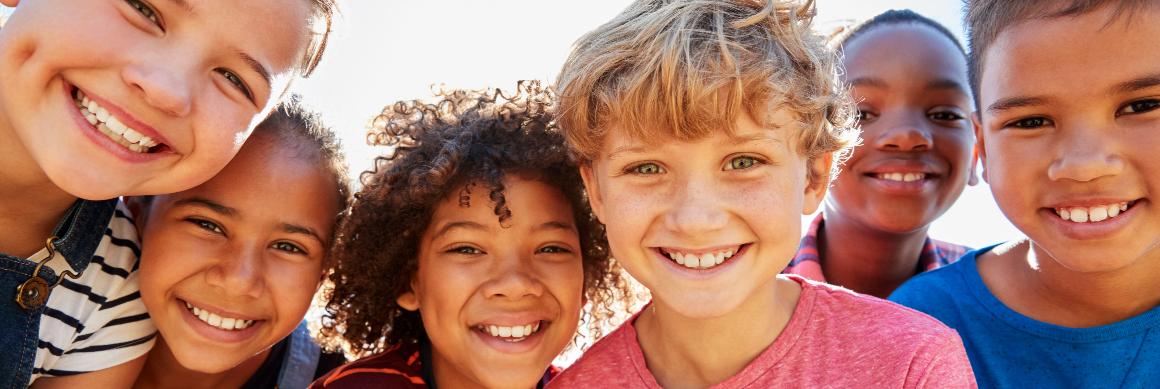
Healthy Chicago Vision
Chicago is a city where all people, in all communities, have an equal opportunity to live full, healthy lives.
Drivers of the life expectancy decline & gap

How do we know what contributes to the life expectancy decline and gap?
In 2019, the City of Chicago's Community Health Status Assessment collected and assessed a wide variety of community health data. Along with more traditional health data like mortality and disease, the assessment also includes social factors affecting health (education, income, housing, environment, institutional and social inequities, etc.). Data was broken down by race and community area to uncover life expectancy declines and gaps.

Why do Chicago’s life expectancy decline and gap exist?
In 2019, we led a community health assessment to collect and assess a wide variety of data. Along with more traditional figures like mortality and disease, the assessment also includes social factors affecting health (education, income, housing, environment, institutional and social inequities, etc.). Data were broken down by race and community area to uncover life expectancy declines and gaps.
Source: CDPH Office of Epidemiology, 2020 Death Certificate Data
Chronic Disease
Healthy eating is essential to preventing chronic diseases like obesity, heart disease and cancer. In 2021, nearly 80% of non-Hispanic white adults had easy access to fresh produce, compared with 57% of non-Hispanic Black adults and half of Latinx adults.
Source: CDPH Healthy Chicago Survey, 2021


Gun-Related Homicide
Gun-related homicide deaths among non-Hispanic Black men in Chicago increased more than 50% from 2020 to 2021, to a rate more than 25 times that of non-Hispanic white Chicagoans.
Source: CDPH Office of Epidemiology, 2021 Death Certificate Data
Infectious Disease (COVID/HIV/Influenza, etc)
Only two in three HIV+ non-Hispanic Black men who have sex with men were engaged in HIV medical care, compared with more than 80% of their white and Latinx counterparts.
Source: 2017 CDPH HIV Behavioral Surveillance


Infant Mortality
Non-Hispanic Black women are more than 25 times likelier to lose a newborn compared to white women. And low birthweight babies are born to non-Hispanic Black mothers more than twice as often as white or Latina mothers.
Source: CDPH Office of Epidemiology, 2021 Death Certificate Data, 2020 Birth Certificate Data
Opioid Overdose
Non-Hispanic Black Chicagoans die from fentanyl overdoses more than twice as often as white or Latinx Chicagoans.
Source: CDPH Office of Epidemiology, 2021 Death Certificate Data
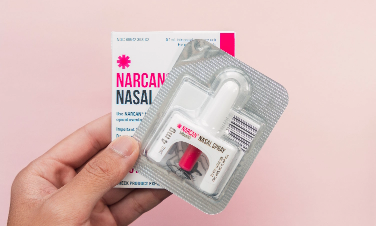
reducing the gap
Your community’s health isn’t just affected by healthcare. To close the life expectancy gap between white Chicagoans and other racial groups, Healthy Chicago is focused on all the things that make us healthy, including:
- Policies and processes that support anti-racist, multicultural systems
- Safe public spaces that serve all Chicagoans
- Vibrant neighborhoods that support community identity
- And more

Community involvement
While Healthy Chicago is an initiative of the City of Chicago, success is driven by our communities. Groups from across the city — neighborhood and faith-based groups, businesses and other connected citizens — join together to take real action. Our goal: Equality, better health, and better wellbeing.





While Healthy Chicago is an initiative of the Chicago Department of Public Health, success is driven by our communities. Groups from across the city — neighborhood and faith-based groups, businesses and other connected citizens — join together to take real action. Our goal: Equity, better health and wellbeing.
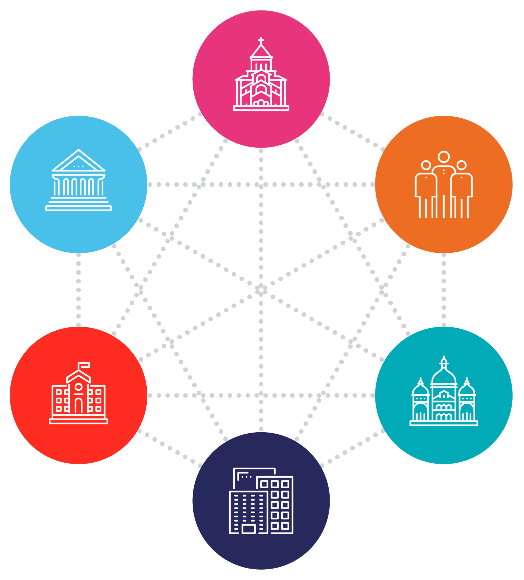
Key Definitions
anti-racist
Ideas and actions that identify and fight against racism. Black Lives Matter is one modern example of an anti-racist movement.
burden
The weight of a responsibility.
DISINVESTMENT
The denial of funding, services and other community resources. Disinvestment is often driven by racist or prejudiced policies.
HEALTH EQUITY
The opportunity for every person to live their healthiest life.
HEALTH LITERACY
A person’s ability to find, understand, and use information and services to make health-related decisions.
LIFE EXPECTANCY
How long a person should expect to live based on the average for people like them.
MOVEMENT
A group of people working together to advance their shared ideas.
TRAUMA
A long-term emotional response to an upsetting event, whether single or long-term. These responses can be both physical and emotional.
Frequently Asked Questions
We’ll update this list over time to answer your questions.
The life expectancy gap is the difference between how long two groups of people expect to live. Latinx Chicagoans have lost the most years of life expectancy since 2010. And all racial groups except white Chicagoans have lost or are losing life expectancy.
In part, Chicago’s life expectancy gap exists because of unfair laws and policies rooted in bias and racism. As a result, Black and Latinx Chicagoans have less of a chance to live long, healthy lives.
Healthy Chicago is the movement toward addressing health disparities and improving community health for all Chicagoans. We operate in lockstep with those affected by disparities to ensure power, opportunities and resources where they’re most needed.
Health is something we see and feel in our communities, but it’s also measurable. Healthy Chicago regularly collects and compares data and community feedback over time to measure our progress within our seven long-term priority areas. And every 5 years, we publish an updated city-wide plan for collective action.
While Healthy Chicago is an initiative of the City of Chicago, our success depends on close collaboration with community leaders—folks living in areas most affected by inequitable health policies who understand the daily reality. The movement brings together groups from various sectors across the city—neighborhood and faith-based groups, businesses, government, policy advocates and more—to take real action for equality and better health and wellbeing.
We’re glad you asked! Visit healthychicago.com/getinvolved for a complete list of resources. It’s easy to participate, no matter how much time you can commit..
WHAT ARE HEALTHY CHICAGO EQUITY ZONES?
Chicago is made up of many communities with varying health priorities. CDPH funds six Equity Zones to help meet these priorities and focus funding and effort where they’re most needed.
Because Healthy Chicago focuses on resident-led change at the hyper-local level, we’re building actionable plans that actually fit your community.
The Six Equity Zones
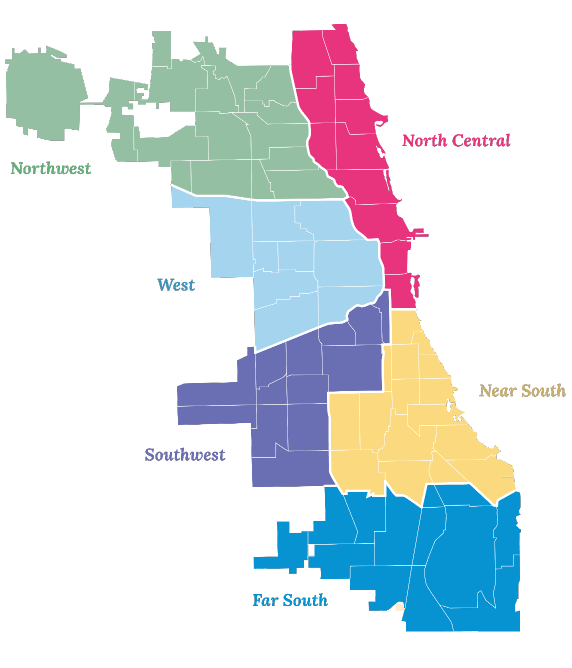
Equity Zone Regional Leads
Six regional lead organizations are responsible for providing financial, administrative and project management support. Leads are required to work with at least one community organization in every neighborhood in their region.
Far South: Phalanx Family Services
Near South: Greater Auburn Gresham Development Corporation
North/Central: Swedish Covenant Hospital
Northwest: Northwest Center
Southwest: Southwest Organizing Project
West: Rush University Medical Center (on behalf of West Side United)

WHAT IS HEALTH EQUITY IN ALL POLICIES?
Health Equity in All Policies redefines the city’s approach to policies and processes by putting equity at the center of decisionmaking. HEiAP shares power through community/government partnerships, embeds a whole-of-government approach to collaboration among City departments and agencies, supports community-driven policy change, and creates co-owned strategies for addressing health inequities.
Why is Health Equity in All Policies needed?
Historically, Black and Latinx Chicagoans have less access to resources and power than other groups. We recognize that institutions have contributed to this problem. Healthy Chicago shifts the focus to fairness by approaching policies and processes through a lens of health equity.

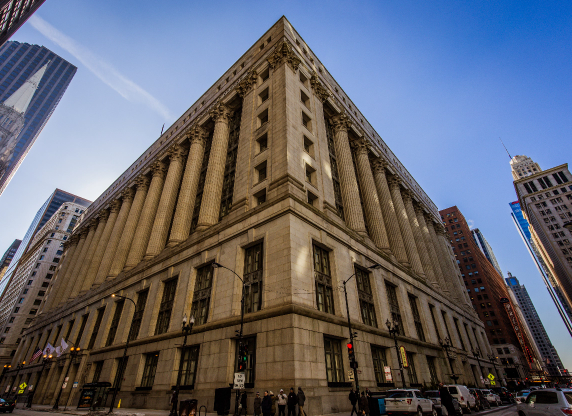
Where does Healthy Chicago apply Health Equity in All Policies?
Healthy Chicago 2025 calls for a Health Equity in All Policies approach, focusing on six priority areas:
- Environment
- Food access
- Institutional change
- Housing
- Neighborhood planning & development
- Public safety
